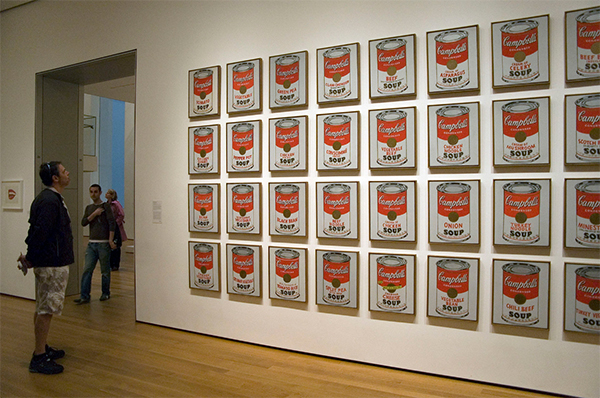Pop Art emerged in the 1950s as a reaction against the seriousness and elitism of the art world. It celebrated popular culture, consumerism, and mass production, transforming mundane objects and images into vibrant works of art. This article explores the playful and colorful world of Pop Art, highlighting its key characteristics, notable artists, and lasting impact.
Origins and key characteristics
Pop Art originated in Britain and the United States in the 1950s and reached its peak in the 1960s. It was a response to the prevailing art movements of the time, such as Abstract Expressionism. Pop Art embraced everyday objects, advertising images, comic books, and celebrities as source material. It aimed to blur the boundaries between high and low culture, challenging traditional notions of art.
Notable pop art artists
Andy Warhol, often regarded as the king of Pop Art, revolutionized the movement with his unique approach. He famously depicted everyday objects like Campbell’s Soup cans and Coca-Cola bottles, as well as celebrities like Marilyn Monroe. Roy Lichtenstein, another prominent figure, incorporated the style of comic books into his artwork, using bold, primary colors and Benday dots. Other notable artists include Claes Oldenburg, who created oversized sculptures of everyday objects, and Richard Hamilton, whose collage-style works combined imagery from popular culture.
Impact on popular culture
The impact of Pop Art on mainstream culture cannot be exaggerated. By pushing the limits of conventional artistic norms, it revolutionized the way art was perceived, opening doors for wider public engagement. Pop Art, with its clever utilization of prevalent visuals and various items, managed to encapsulate the essence of its era while mirroring the swift transformations instigated by the rise of consumer culture and the widespread influence of mass media. Its vibrant and playful aesthetic also permeated various aspects of popular culture, from fashion and advertising to music album covers and movie posters.
Legacy and contemporary pop art
Despite reaching its peak in the 1960s, Pop Art still holds significant influence in modern art and culture. Numerous creative individuals in the present day find motivation in the utilization of popular visuals, vibrant hues, and a lighthearted methodology employed by the movement. Street art, graphic design, and even the aesthetics of social media reflect the impact of Pop Art. Audiences worldwide remain enthralled by its remarkable talent for turning the ordinary into masterpieces.
Criticisms of pop art
While Pop Art garnered widespread popularity, it was not without its critics. Some argued that it celebrated consumerism and trivialized art, reducing it to a mere commodity. Others felt that Pop Art lacked depth and intellectual rigor compared to other art movements. However, Pop Art’s playful aesthetics and its ability to connect with a wider audience cannot be dismissed.
Conclusion
Pop Art is a vibrant and lively tribute to the influence of popular culture that continues to captivate audiences worldwide. By presenting vivid visuals and embracing the ordinary items, it confronted the exclusivity of the art sphere and opened up art to everyone. Renowned individuals like Andy Warhol and Roy Lichtenstein forged a path that has had a long-lasting influence on the realm of art, acting as an enduring wellspring of creativity for contemporary creators and captivating spectators worldwide. The enduring influence of Pop Art is a testament to the power of art to evoke happiness, be accessible, and seamlessly integrate into our everyday lives.
1st & featured image by https://commons.wikimedia.org/wiki/Category:Pop_art#/media/File:Artista_Lobo_Mural_Corporativo.jpg
2nd image by https://commons.wikimedia.org/wiki/Category:Andy_Warhol#/media/File:Ame02128_22.jpg

